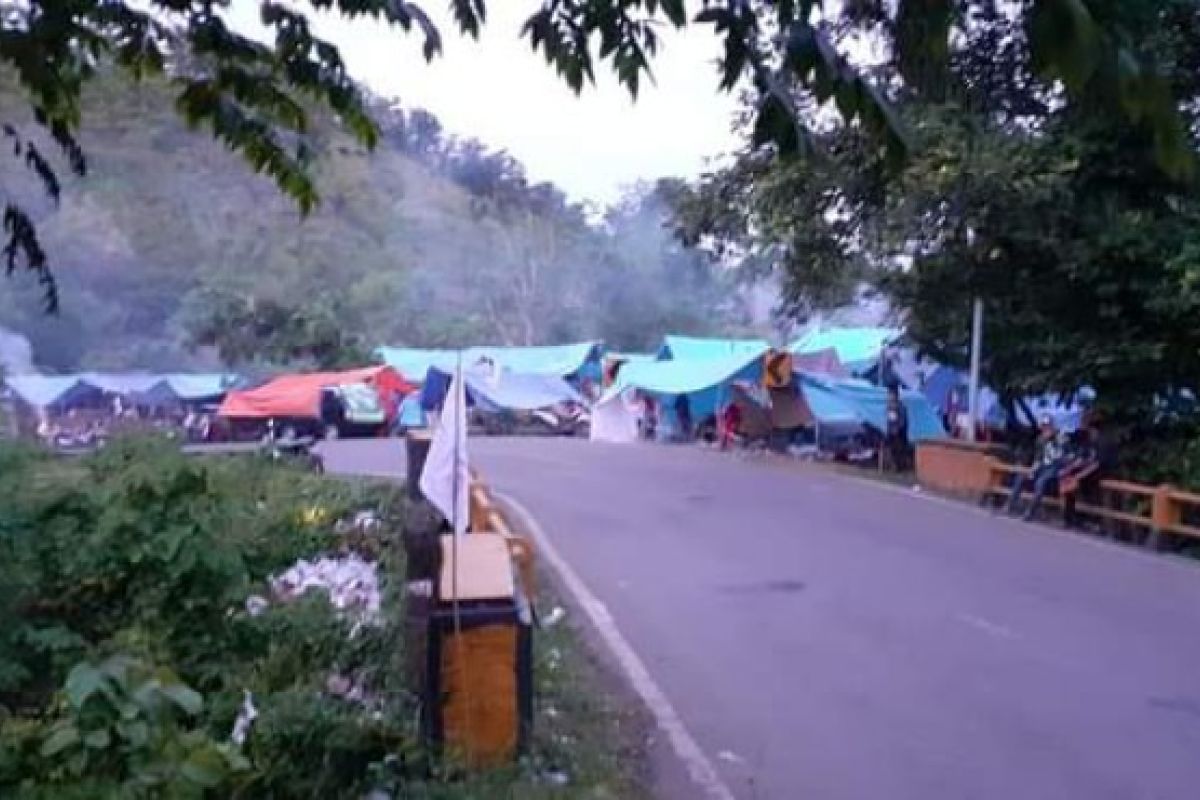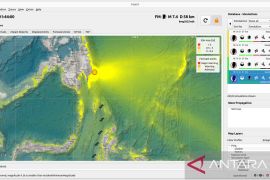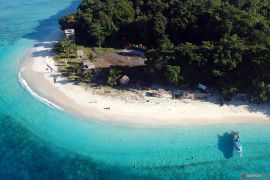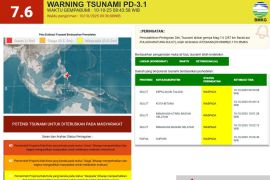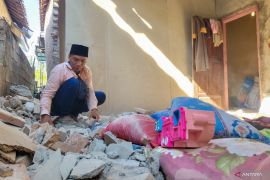The residents scampered to get into their vehicles and headed quickly to the city's higher ground over fears of a tsunami. Several of these people, who had just returned home after staying at temporary shelters, again decided to take refuge there, according to several residents.
Wandi, a local resident, pointed out that the tremors of Sunday evening's quake were not as strong as those felt on January 15. However, the quake did set off panic among the residents.
The Meteorology, Climatology, and Geophysics Agency (BMKG) recorded that the epicenter of the earthquake that struck at 8:13 p.m. local time on Sunday, January 31, 2021, was located some 36 kilometers (km) away from south of Mamuju, at a depth of 20 km.
Amrin, another local resident, told ANTARA that owing to the recent earthquake, he decided to return to the shelter where he had stayed for two weeks over lingering concerns of an unpredictable catastrophe caused by aftershocks.
The 6.2-magnitude earthquake resulted in the forced displacement of some 91,003 residents in three disaster-hit districts comprising 58,123 residents of Mamuju District; 25,737 people of Majene District; and 5,343 locals of Polman District.
Earthquakes regularly hit various parts of Indonesia since the country lies on the Circum-Pacific Belt, also known as the Ring of Fire, where several tectonic plates meet and cause frequent volcanic and seismic activities.
Apart from the 6.2-magnitude earthquake that rattled West Sulawesi on January 15, 2021, the Sulawesi Island also bore witness to a more deadly earthquake on September 28, 2018.
During that time, a 7.4-magnitude earthquake had hit several parts of Central Sulawesi Province. It was also followed by a tsunami and soil liquefaction in Palu City.
Consequently, some 2,102 people lost their lives; 4,612 people suffered injuries; and 680 others went missing. A total of 68,451 homes incurred serious damage, while 78,994 people got displaced.
The authorities and humanitarian workers decided to bury the large number of rotting corpses in mass graves.
Meanwhile, material losses inflicted by the twin deadly disasters were estimated to reach Rp15.29 trillion.
The provincial capital of Palu bore the brunt of the disaster, with material damage and losses recorded at Rp7.6 trillion, or 50 percent of the total estimate, according to the National Disaster Mitigation Agency (BNPB).
The material damage and losses in Sigi District were recorded at Rp4.9 trillion, or 32.1 percent; Donggala District, at Rp2.1 trillion, or 13.8 percent; and Parigi Moutong District, at Rp631 billion, or 4.1 percent.
Material damage in the four affected areas reached an estimated Rp13.27 trillion, while the material losses were reportedly around Rp2.02 trillion, the agency stated in October 2018.
Related news: 8,000 homes destroyed in West Sulawesi's 6.2-magnitude quake
Related news: Emergency status of quake-hit Mamuju Majene extended for 14 days: BNPB
Close
EDITED BY INE
Translator: M.F.Hanapi, Rahmad Nasution
Editor: Fardah Assegaf
Copyright © ANTARA 2021
